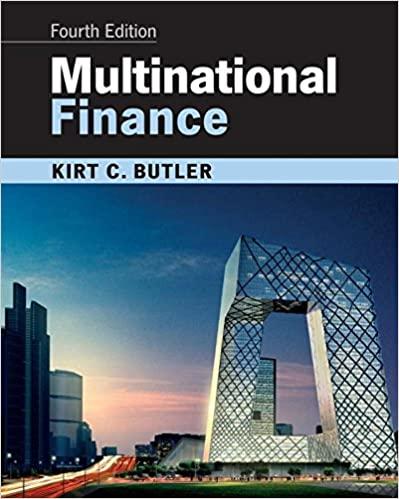Answered step by step
Verified Expert Solution
Question
1 Approved Answer
Part A A Venture Capitalist presents Arbuckle, Inc., the shoes manufacturer with the following term sheet for a series A funding round: Amount Security Mandatory



 Part A A Venture Capitalist presents Arbuckle, Inc., the shoes manufacturer with the following term sheet for a series A funding round: Amount Security Mandatory Conversion Price $5 million Convertible Preferred Mandatory on IPO > $20m, and price > $4.00/share $1.50 per share 2x Liquidation preference on merger, sale, or liquidation. 3 million shares 3 million shares Liquidation Rights Option Pool (employees) Founder Shares Dividends/Redemption Anti-dilution No Full Ratchet 1. If the company goes public at a market value of $80 million, and assuming the mandatory conversion is triggered (that is, everyone is converted to common shares), how will the value be split between founders, employees, and VC (assuming no further financings)? 2. Does your answer to Question 1 change if the mode of exit were a merger or acquisition (at a $80m exit value) with no mandatory conversion? If so, give the new split. If not, explain why not. 3. Does your answer to Question 2 change if the security was participating preferred (and keeping the 2x preference)? If so, give the new split. If not, explain why not. 4. If you the founder) were negotiating the term sheet as given in the table on page 2, and you were sure that the firm will ultimately get acquired at $80m, would you rather reduce the liquidation preference from 2x to 1x, or raise the price per series A share from $1.50 to $2? 5. Suppose the company accepts the term sheet as given in the table above. Eight months later the company raises $6m in series B financing, for 40% of the company (i.e., series B investors will own 40% of the firm when the round is concluded). Does the anti-dilution provision trigger? (that is, is this a down-round?) Part B a. Jones, the investor, proposes taking participating preferred stock' with 1x liquidation preference in return for her $5 million investment. Draw the payoff diagram for this security from Jones' perspective, assuming she invests $5 million at a pre-money valuation of $14.75 million with no option pool. b. What is her cash-on-cash return (money received divided by investment) if NewVenture exits in December 2020 at a $150 million valuation? c. Thompson, the founder, provides a counter-proposal in which the security will be a standard convertible preferred stock with a liquidation of 2X. Draw the payoff diagram for this security from Jones' perspective. d. If NewVenture exits in December 2020 at a $150 million valuation what would be Jones payoff? which type of a security would Jones prefer? Why? e. At what company valuation would the two securities have an equal payout
Part A A Venture Capitalist presents Arbuckle, Inc., the shoes manufacturer with the following term sheet for a series A funding round: Amount Security Mandatory Conversion Price $5 million Convertible Preferred Mandatory on IPO > $20m, and price > $4.00/share $1.50 per share 2x Liquidation preference on merger, sale, or liquidation. 3 million shares 3 million shares Liquidation Rights Option Pool (employees) Founder Shares Dividends/Redemption Anti-dilution No Full Ratchet 1. If the company goes public at a market value of $80 million, and assuming the mandatory conversion is triggered (that is, everyone is converted to common shares), how will the value be split between founders, employees, and VC (assuming no further financings)? 2. Does your answer to Question 1 change if the mode of exit were a merger or acquisition (at a $80m exit value) with no mandatory conversion? If so, give the new split. If not, explain why not. 3. Does your answer to Question 2 change if the security was participating preferred (and keeping the 2x preference)? If so, give the new split. If not, explain why not. 4. If you the founder) were negotiating the term sheet as given in the table on page 2, and you were sure that the firm will ultimately get acquired at $80m, would you rather reduce the liquidation preference from 2x to 1x, or raise the price per series A share from $1.50 to $2? 5. Suppose the company accepts the term sheet as given in the table above. Eight months later the company raises $6m in series B financing, for 40% of the company (i.e., series B investors will own 40% of the firm when the round is concluded). Does the anti-dilution provision trigger? (that is, is this a down-round?) Part B a. Jones, the investor, proposes taking participating preferred stock' with 1x liquidation preference in return for her $5 million investment. Draw the payoff diagram for this security from Jones' perspective, assuming she invests $5 million at a pre-money valuation of $14.75 million with no option pool. b. What is her cash-on-cash return (money received divided by investment) if NewVenture exits in December 2020 at a $150 million valuation? c. Thompson, the founder, provides a counter-proposal in which the security will be a standard convertible preferred stock with a liquidation of 2X. Draw the payoff diagram for this security from Jones' perspective. d. If NewVenture exits in December 2020 at a $150 million valuation what would be Jones payoff? which type of a security would Jones prefer? Why? e. At what company valuation would the two securities have an equal payout




Step by Step Solution
There are 3 Steps involved in it
Step: 1

Get Instant Access to Expert-Tailored Solutions
See step-by-step solutions with expert insights and AI powered tools for academic success
Step: 2

Step: 3

Ace Your Homework with AI
Get the answers you need in no time with our AI-driven, step-by-step assistance
Get Started


